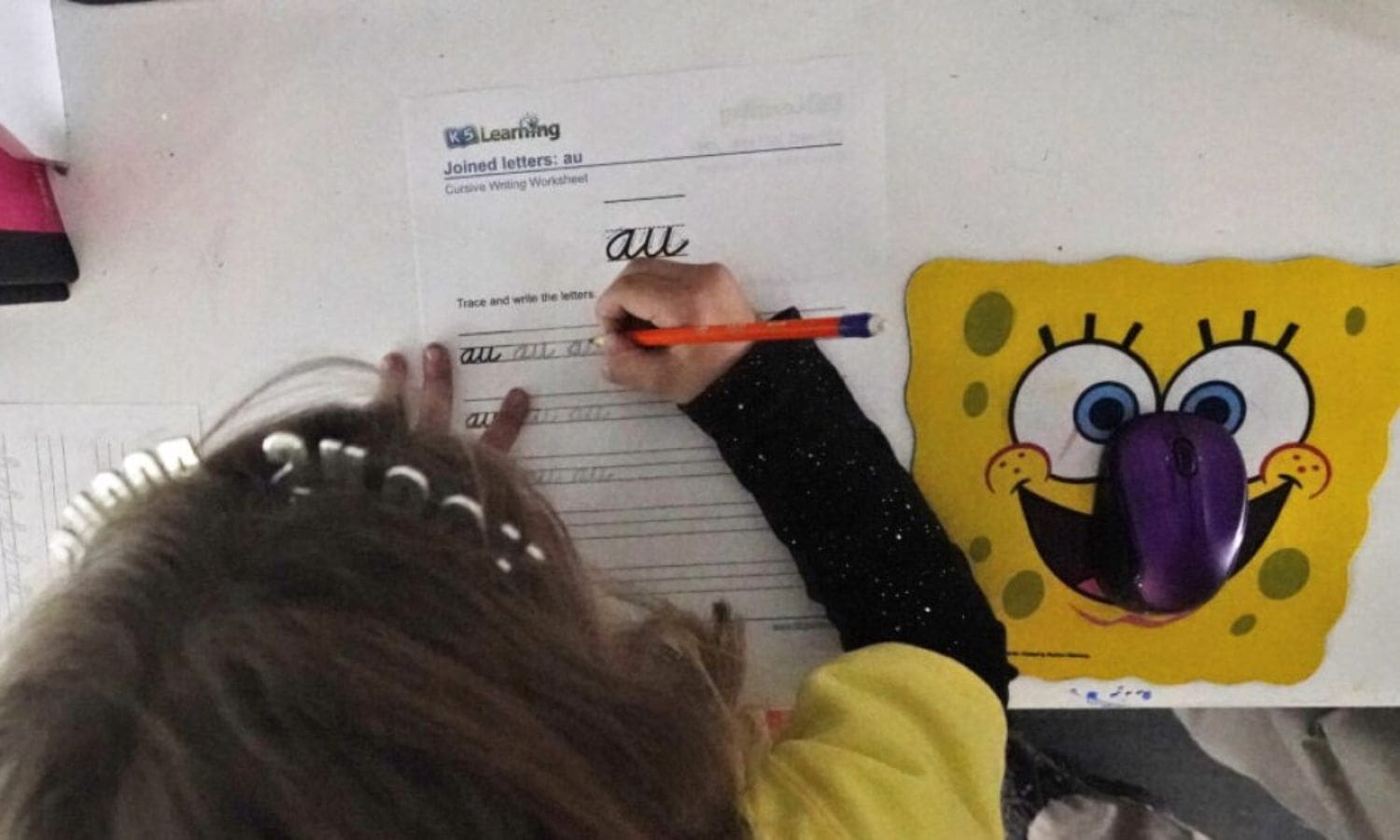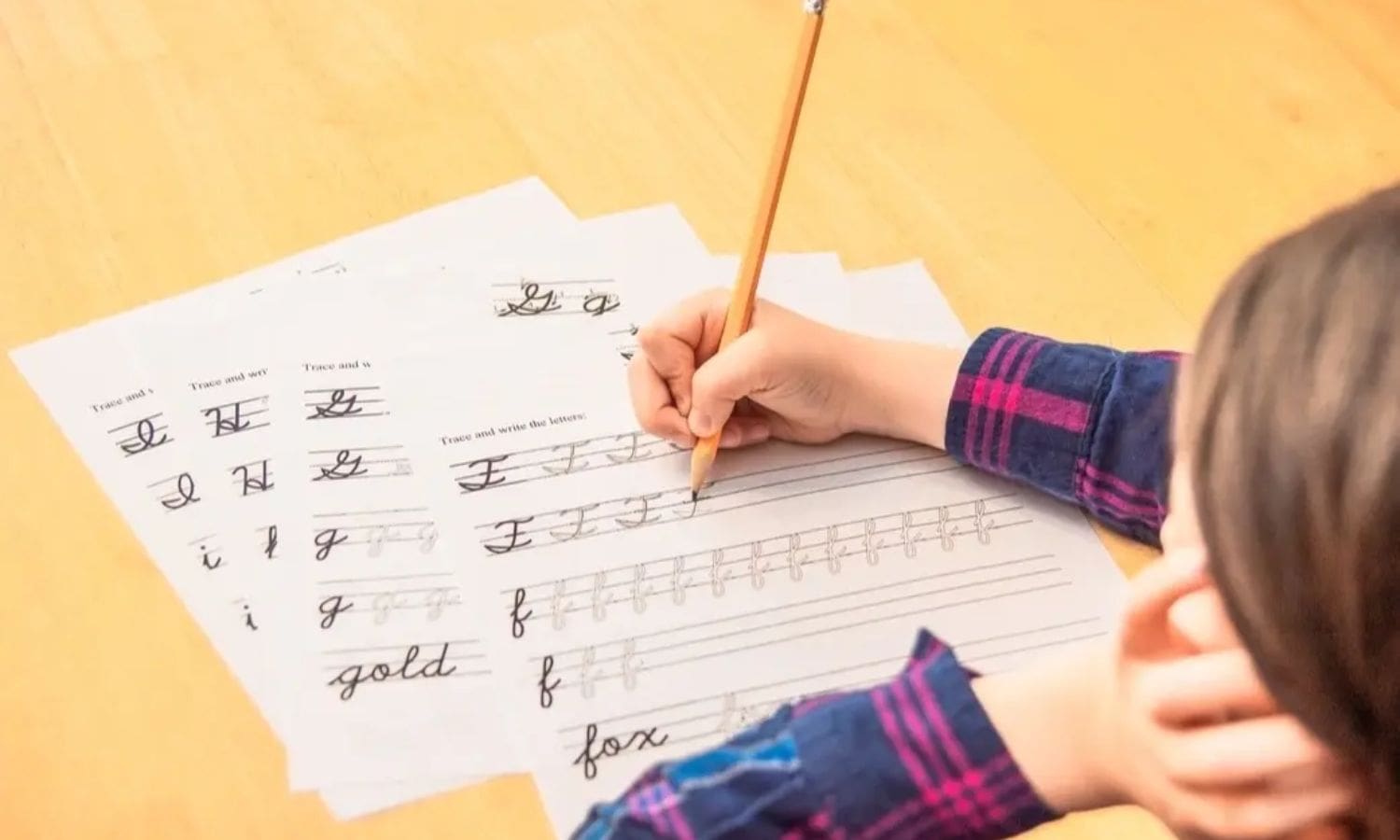Digital Age Cursive Stages Comeback: In an era dominated by digital technology and keyboard proficiency, the resurgence of cursive handwriting in California schools may seem like an unlikely development. However, recent legislative efforts and growing recognition of the educational and cognitive benefits of cursive have prompted a reevaluation of its place in the curriculum.
This shift towards reintegrating cursive instruction raises intriguing questions about the enduring relevance of this traditional skill in the digital age. By exploring the motivations behind this surprising comeback and examining the potential advantages of cursive handwriting, we can gain a deeper understanding of the ongoing evolution of education in the twenty-first century.
Key Takeaways Of Digital Age Cursive Stages Comeback
- Assembly Bill 446 in California mandates cursive instruction for students in third grade and above, aiming to develop their skills in reading and writing cursive.
- Learning cursive has multiple educational benefits, including stimulating brain development, enhancing cognitive function, improving reading comprehension and letter recognition, and promoting fine motor skills.
- At Orangethorpe Elementary School, Teacher Pamela Keller employs a comprehensive approach to cursive instruction, teaching basic strokes, letter formations, and progressing to words and sentences, while emphasizing the elegance and artistry of cursive writing.
- The decline of cursive in education was influenced by the rise of digital tools, exclusion from Common Core standards, time constraints, and focus on other subjects. However, recent studies have shown the cognitive benefits of learning cursive, leading to its resurgence in many states, including California.


California Mandates Cursive Instruction: Assembly Bill 446 Overview
California Mandates Cursive Instruction: An Overview of Assembly Bill 446
Assembly Bill 446, passed in California, has brought cursive handwriting back into the spotlight. With an emphasis on cursive lessons for students in third grade and above, this bill aims to ensure that students develop the necessary skills to read and write in cursive.
The mandate recognizes the importance of cursive in developing fine motor skills, enhancing brain connectivity, and preserving historical documents. By requiring cursive instruction, California hopes to bridge the gap between technology-driven education and the art of handwriting.
This bill aligns with the growing trend of cursive making a comeback in schools across the country. As educators strive to provide a well-rounded education, the reintroduction of cursive instruction addresses the need for mastery in both digital and traditional forms of communication.
Educational Benefits of Learning Cursive: Expert Perspectives
With the reintroduction of cursive instruction in California schools, experts are highlighting the educational benefits of learning cursive, emphasizing its impact on cognitive development, reading comprehension, and fine motor skills. Here are some key perspectives from experts:
- Cursive writing stimulates brain development by engaging both hemispheres of the brain, enhancing neural connections and improving overall cognitive function.
- Learning cursive improves reading comprehension as it helps students recognize and remember letters, words, and sentences more effectively.
- Fine motor skills are enhanced through the practice of cursive writing, as it requires precise hand movements and coordination.
- Exposing children to historic documents and family letters written in cursive allows them to connect with the past and gain a deeper understanding of history.
- Cursive writing promotes creativity and personal expression, allowing students to develop their own unique writing style.
Implementation at Orangethorpe Elementary School: Teacher’s Approach
At Orangethorpe Elementary School, teacher Pamela Keller employs a comprehensive approach to the implementation of cursive instruction, focusing on the cognitive benefits it offers to students.
Keller recognizes that cursive writing engages both hemispheres of the brain, enhancing memory, comprehension, and critical thinking skills.
She incorporates various techniques to make cursive learning enjoyable and effective. Keller begins by teaching students the basic strokes and letter formations, gradually progressing to words and sentences.
She encourages students to practice regularly, providing them with worksheets and activities to reinforce their learning.
Keller also emphasizes the elegant and artistic aspects of cursive writing, sparking students’ enthusiasm and motivation.
As a result, students at Orangethorpe Elementary School eagerly embrace cursive writing, appreciating its beauty and recognizing its potential to enhance their cognitive abilities.


Also Read: San Jose Man Faces Conviction in 2018 Hit-and-Run Fatality
Decline and Resurgence of Cursive: Historical Context
The historical context of cursive instruction reveals the decline of this writing style alongside the rise of digital tools and its subsequent resurgence in curricula across the United States.
- With the advent of computers and smartphones, the need for cursive writing diminished, leading to its exclusion from the national Common Core education standards in 2010.
- The decline of cursive instruction was also due to time constraints and a focus on other subjects deemed more essential in the digital age.
However, recent studies have shown that learning cursive has cognitive benefits, such as improved memory and fine motor skills.
- As a result, many states, including California, have reintroduced cursive into their curricula, recognizing its value in developing well-rounded students.
- Teachers are now incorporating cursive instruction into their lesson plans, emphasizing the importance of this traditional writing style in today’s digital world.
Neurological and Cognitive Benefits of Cursive: Leslie Zoroya’s Perspective
Leslie Zoroya, an expert from the Los Angeles County Office of Education, sheds light on the neurological and cognitive benefits of learning cursive, emphasizing its unique engagement of different neural networks and its contribution to improved childhood development.
According to Zoroya, cursive handwriting activates multiple areas of the brain, including those responsible for language, memory, and motor skills. This engagement of various neural networks enhances cognitive abilities such as reading comprehension, creative thinking, and problem-solving.
Additionally, the fluidity and connectedness of cursive writing promote better hand-eye coordination and fine motor skills development. Zoroya further highlights the importance of cursive instruction in early childhood education, as it lays the foundation for future academic success and aids in the overall development of children.


Conclusion Of Digital Age Cursive Stages Comeback
The reintroduction of cursive instruction in California schools reflects a growing recognition of its educational and cognitive benefits.
The implementation at Orangethorpe Elementary School showcases the commitment of teachers to incorporate cursive into their curriculum.
Furthermore, the historical context highlights the decline and resurgence of cursive writing.
Overall, the neurological and cognitive advantages of learning cursive, as highlighted by Leslie Zoroya, further support the case for its reintroduction in schools.
Our Reader’s Queries
Q1. Does California require cursive?
A. On Friday, Governor Gavin Newsom of California signed a bill mandating cursive instruction for students in first through sixth grade.
Q2. Why cursive handwriting needs to make a school comeback?
A. Advocates, including Quirk-Silva, contend that incorporating cursive into the curriculum ensures that students can read historical documents such as the U.S. Constitution and letters from relatives. Occupational therapists argue that learning cursive contributes to the development of fine motor skills and aids comprehension, particularly for individuals with dyslexia.
Q3. When did cursive decline?
A. Historically, cursive was linked to notions of good character and virtue, prominently taught in the 19th century as a “Christian ideal” and occasionally acknowledged for its role in disciplining the mind. However, this peak declined in the 20th century with the widespread adoption of typewriters, marking a shift in writing practices.
Q4. Is cursive handwriting good or bad?
A. Supporters of cursive instruction highlight numerous studies demonstrating its positive impact. Learning cursive is believed to enhance retention and comprehension, engaging the brain deeply as students master the skill of connecting letters in a continuous flow.
Q5. Can kids read cursive?
A. In contemporary times, an increasing number of individuals, including both children and adults, with or without disabilities, struggle to read cursive handwriting, even when it is meticulously crafted. Notably, a significant portion of the population in the USA, Canada, and India, particularly those born after 1985 (roughly individuals aged 35 and under), falls into the category of non-readers of cursive.

